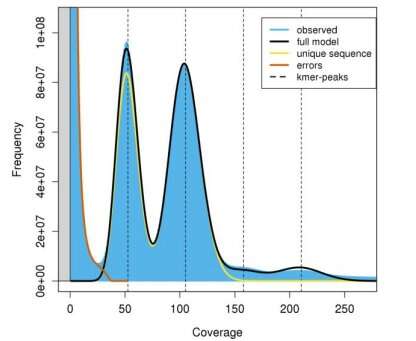This article has been reviewed according to Science X's editorial process and policies. Editors have highlighted the following attributes while ensuring the content's credibility:
fact-checked
peer-reviewed publication
proofread
Confronting climate change: The genetic makeover of a threatened conifer

Conifers like Cupressus gigantea face significant threats from climate change and human activities, leading to habitat fragmentation and population decline. These challenges reduce genetic diversity and increase inbreeding, potentially accumulating harmful mutations.
Previous studies have focused on the genetic impacts of population decline in various species, but little is known about such effects in conifers due to their large genomes. Based on these challenges, it is crucial to conduct in-depth research on the genetic burden and purifying selection in Cupressus species.
A team of researchers from Sichuan University and other institutions published a study in Horticulture Research on 11 April 2024, uncovering the genetic resilience of the rare Tibetan cypress (Cupressus gigantea).
The study, using a newly assembled high-quality genome, reveals how prolonged inbreeding and historical climate events have influenced the genetic diversity and fitness of this endangered conifer. By comparing it with its widespread relative, Cupressus duclouxiana, the research provides valuable insights for the conservation of rare conifer species.
The study generated a 10.92 Gb high-quality genome for Cupressus gigantea and compared it with Cupressus duclouxiana using genomic data from 83 individuals. The results showed a significant reduction in the population size of C. gigantea during the early Quaternary, with no recovery until recently, unlike the recovering populations of C. duclouxiana.
Despite having lower overall genomic diversity, C. gigantea exhibited fewer deleterious mutations, suggesting effective purifying selection during prolonged inbreeding. This genetic purging likely helped reduce the genetic burden, enhancing the species' survival despite its reduced population size.
The study also highlighted that the genetic load of C. gigantea was lower than expected, with fewer loss-of-function and deleterious alleles in runs of homozygosity.
These findings suggest that the endangered cypress has undergone genetic adaptations that could be crucial for its conservation. The genomic insights provided by this study emphasize the need for effective genetic management in conserving long-lived conifer species with large genomes, ensuring their survival in changing environmental conditions.
Dr. Kangshang Mao, one of the lead researchers, stated, "Our findings underscore the importance of genetic purging in the survival of endangered species like Cupressus gigantea. By understanding these genetic mechanisms, we can develop better conservation strategies to protect and manage these rare and valuable conifers."
The implications of this research extend beyond the survival of a single species. Understanding genetic purging could inform conservation strategies for other endangered species facing similar threats. Moreover, the insights into large genome management may contribute to broader ecological and environmental restoration efforts, ensuring the continued existence of these ancient conifers in a changing world.
More information: Yi Wang et al, Efficient purging of deleterious mutations contributes to the survival of a rare conifer, Horticulture Research (2024). DOI: 10.1093/hr/uhae108
Journal information: Horticulture Research
Provided by TranSpread


















